Outer Space & Universe
Outer Space & Universe
Space, also known as outer space, is the near-vacuum between celestial bodies. It is where everything (all of the planets, stars, galaxies and other objects) is found.
On Earth, space begins at the Kármán line (100 km above sea level). This is where Earth's atmosphere is said to stop and outer space begins. This is not a firm boundary but is a convention used by scientists and diplomats.
Items in space are free to move back and forth; up and down; and left and right. These three dimensions are what make 3D space. Items also move forward through time, which is sometimes called the fourth dimension.
The majority of space contains very little matter and so most of it is a vacuum. Scientists do not know how big space is but we do know that space is extremely big, and is always expanding.
According to the big bang theory, all matter and energy in the Universe was compressed into a very small space. Then it exploded and started expanding. Space is still growing in size today; this means the distance from one galaxy to distant galaxies is getting longer.
Gravity is the force that keeps the Moon in orbit around the Earth and the planets in orbit around the Sun. Gravity can stretch and bend space similar to how a heavy ball placed on a stretched sheet of rubber will cause the rubber to stretch. The scientist who discovered that space can bend is named Albert Einstein. How gravity bends space is part of his theory of general relativity.
Astronauts, Cosmonauts, Taikonauts and Spationauts
An astronaut is any person who is trained by NASA to travel and perform tasks in space. Although the space traveler may not necessarily be a United States citizen, each astronaut does go through a rigorous training regiment by the National Aeronautics and Space Administration. Other space travelers go by other names then astronaut depending on their country of origin.
In the United States, astronaut is derived from the Greek words ástron (star) and nautis (sailor). While, in Russia, a space traveler goes by the name космонавт (English: cosmonaut), which is derived from the Greek words kosmos (universe) and nautis (sailor). Westerners call a space traveler from China a taikonaut, based on the 1998 writings of Chiew Lee Yik and Chen Lan where the term tàikōng (great emptiness), Chinese for “space”. In China, the term yuháng yuán (universe navigator) is used for space traveler.
Only the United States of America (United States), Russia (earlier, the Union of Soviet Socialist Republics), and the People’s Republic of China (China) have sent manned spacecraft into space. Other countries have assisted these countries by sending their own space travelers on space missions. For instance, a French space traveler is called a spationaut (from the French word spationaute), which is derived from the Latin spatium (space) and Greek nautis (sailor). (plural in Greek nautes = sailors)
-
04:09
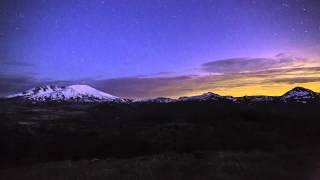
Remarkable Time-lapse of Pacific Northwest Land and Skies | Video
Added 787 Views / 0 LikesPhotographer John Eklund captured over 260,000 images to create this stunning video of the majestic landscapes in and magnificent skies above the pacific northwest of the United States.
-
01:40
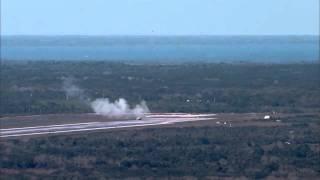
NASA's Morpheus Lander 'Free Ride' for 74 Seconds | Video
Added 820 Views / 0 LikesA prototype for future planetary landers, this vertical takeoff and landing craft flew 160 feet higher (467ft) than its last flight; also forward 637 feet, testing NASA's Automated Landing and Hazard Avoidance Technology (ALHAT).
-
02:27
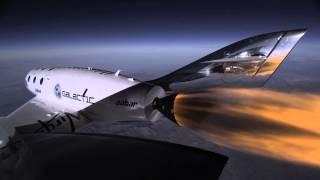
SpaceShipTwo's 3rd Powered Flight Soars To New Heights | Video
Added 812 Views / 0 LikesVirgin Galactic successfully tested its vehicle again on January 10th, 2014 and reached 71,000 feet (21,641 meters) and a top speed of Mach 1.4. They are still on track to start commercial service later this year.
-
02:00

SpaceX Wet-Drop Tests Human-Rated Crew Capsule At Sea | Video
Added 822 Views / 0 LikesThe Dragon test article successfully splashed down in the Pacific Ocean in December. The parachute deployment system was evaluated as part of their Commercial Crew Integrated Capability agreement with NASA.
-
02:46
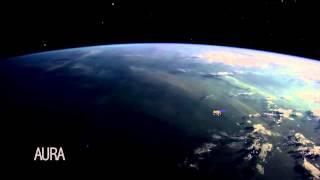
How Non-Stop Communications With Satellites Is Achieved by NASA | Video
Added 753 Views / 0 LikesThe Tracking and Data Relay Satellite (TDRS) network work in conjunction with ground stations to delivers non stop coverage to Earth satellites and the ISS.
-
02:29
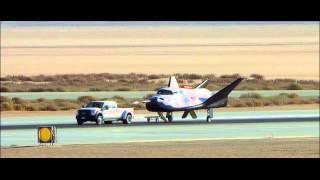
Building The Dream: Sierra Nevada's Dream Chaser Comes Together | Video
Added 876 Views / 0 LikesSierra Nevada's Dream Chaser spacecraft has come a long way. This video shows how the ship was put together, the pilots trained, and the ship tested over the past few years in preparation for a test launch in 2016 and human pilot flights in 2017.
-
05:23
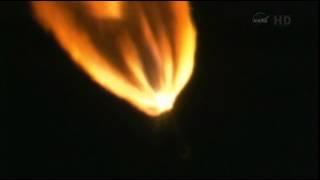
Blast-Off! NASA Launches Next-Gen Communication Satellite | Video
Added 848 Views / 0 LikesThe Tracking and Data Relay Satellite (TDRS-L) launched aboard an Atlas 5 rocket from the Kennedy Space Center on Jan. 23rd, 2013. It will join and upgrade NASA's network of satellites that makes non-stop communication with satellites and the ISS.
-
01:28
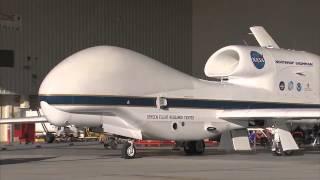
Uncrewed Global Hawk To Fly High For Climate Change Data | Video
Added 748 Views / 0 LikesNASA' s Airborne Tropical Tropopause Experiment (ATTREX) will take measurements in the Pacific Ocean's tropical tropopause (layer of atmosphere, 55,000-65,000 Feet above sea level). It'll provide data on changes in moisture and chemical composition.
-
02:40
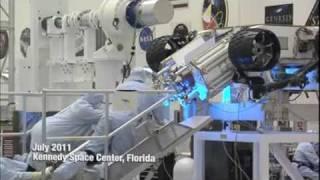
New Mars Rover Powered By Plutonium
Added 765 Views / 0 LikesMore power than can be achieved by solar panels is necessary to run the Mars Science Laboratory aka "Curiosity". Heat from the decay of plutonium dioxide will generate 110 watts of electrical power to charge the rover's batteries. To View More Videos Abou
-
01:25
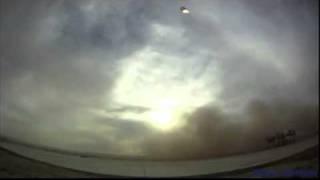
Blue Origin's Vertical Rocket Takes Hop
Added 876 Views / 0 LikesSee private spaceship builder Jeff Bezos's vertical rocket take a short hop during a 2011 test flight by his company Blue Origin. To View More SPACE VIDEO - Go to: http://www.space.com/video/
-
05:07

7 Minutes of Terror: Curiosity Rover's Risky Mars Landing | Video
Added 836 Views / 0 LikesNASA's Curiosity rover is a 1-ton robot that will make an unprecedented Mars landing on Aug. 5, 2012. See how the risky maneuver will keep rover team members in suspense for 7 fateful minutes.
-
01:31
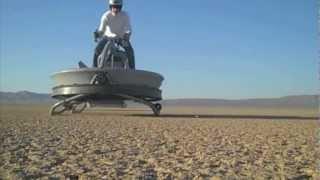
Hover 'Bike' Flies on Pilot's Intuition | Video
Added 739 Views / 0 LikesAerofex has redesigned hover vehicle technology so that it responds to a pilot's natural sense of balance without the need for flight control software.
-
01:37
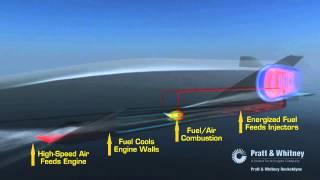
Hypersonic Waverider - How the USAF X-51A Scramjet Works | Video
Added 822 Views / 0 LikesAn engine with no moving parts, flying faster than 1 mile per second for as long as the fuel supply lasts is the goal of supersonic combustion ramjet ("scramjet") designers. Other propulsion must accelerate it before the scramjet begins to operate.
-
01:10
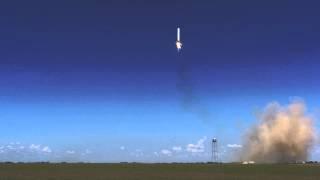
Stampede! SpaceX's Grasshopper Startles Cows | Video
Added 786 Views / 0 LikesIn this fixed camera view, SpaceX's Grasshopper makes a lateral movement of 300 feet before returning to its launchpad, but not before startling a nearby herd of cows.- Main launch video and story here: http://goo.gl/txzhcD
-
01:03
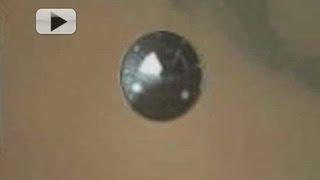
Curiosity Rover's Descent Images Reach Earth | Video
Added 900 Views / 0 LikesThe Mars Science Laboratory's descent imager was hard at work upon its descent to the surface of the Red Planet. This is a stop-motion video of 297 thumbnail images that reached Earth on August 6th, 2012.
-
01:13
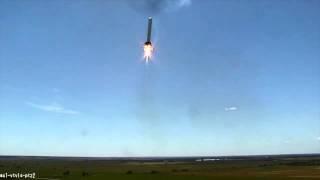
SpaceX's Grasshopper Makes In-Flight Maneuver | Video
Added 747 Views / 0 LikesMore info here: http://goo.gl/j9Fs0d The Falcon 9 test rig (codenamed Grasshopper) successfully completed a 'divert' test, with the ship making a 100m lateral maneuver while reaching an altitude of 250m. This test demonstrated the ships ability to make mo
-
01:59
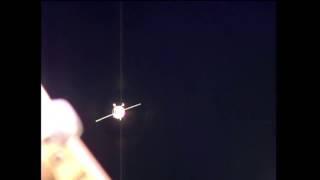
Cargo Ship Overcomes Glitch, Docks to Space Station | Video
Added 866 Views / 0 LikesThe Russian Progress 51 automatically docked to the the ISS's Zvezda Service Module on April 26th, 2013. A navigational antenna did not diploy shortly after launch but mission controllers worked around the problem.
-
03:43
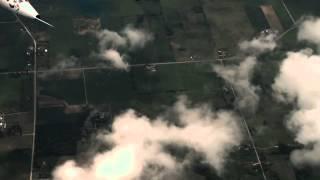
LauncherOne: Virgin Galactic Reveals Orbital Rocket | Video
Added 826 Views / 0 LikesVirgin Galactic's founder, Sir Richard Branson, introduces LauncherOne; a concept for delivering satellites, cargo and crew vehicles into orbit cheaply, with less environmental impact. The company is moving beyond space tourism.
-
03:03
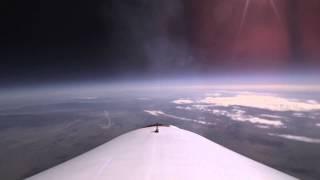
SpaceShipTwo's Intense Rocket Ride - Tail View and Cockpit Recording | Video
Added 716 Views / 0 LikesA camera was strapped to the rear of the Virgin Galactic vehicle to capture footage of the rocket engines and feather system at work. The vehicles 2nd powered flight occurred on September 5th, 2013.
-
01:43
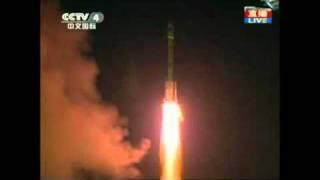
China's First Space Lab Module Lift-Off
Added 774 Views / 0 LikesThe Tiangong 1 was lauched on a Chinese Long March 2F rocket. The prototype space laboratory will perform rendezvous and docking tests with multiple Shenzhouspacecraft this year and next. Credit: CCTV
